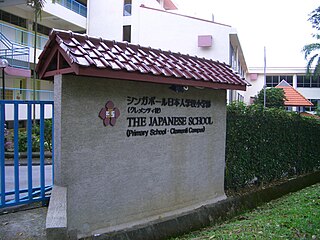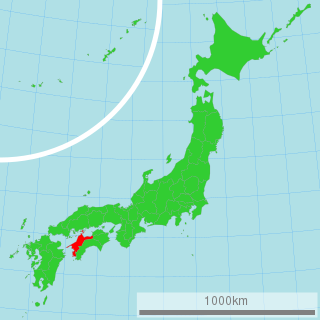
The Nara National Research Institute for Cultural Properties, also known by its former name, the Nara Research Institute for Cultural Properties, is one of two research institutes that comprise the National Institutes for Cultural Heritage, an independent administrative institution created in 2001. Established in April 1952 as part of the National Commission for Protection of Cultural Properties, the institute is located in the city of Nara, in Nara Prefecture, Japan, with branches elsewhere in Nara Prefecture. The institute is divided into departments for the excavation and restoration of the Asuka Palace, the Fujiwara Palace, and the Heijō Palace, historical remains, gardens, and other archaeological sites, and for the study of documents from Japan's early history. The Asuka Historical Museum is also managed by the institute.
Saku was a district located in Shinano Province . Due to land reforms, Saku District split into Minamisaku (南佐久郡) and Kitasaku (北佐久郡) Districts on January 14, 1879.

The Japanese School of Kuala Lumpur is a Japanese international school in Saujana Golf and Country Club in Subang, Selangor, Malaysia. The syllabus at this school is based on the Japanese Education Curriculum.

The Japanese School Singapore is a Japanese international school in Singapore, covering elementary and junior high school levels. There are two separate elementary schools of the JSS in Clementi and Changi, while junior high school division is located in West Coast. As of 2013 this Japanese international school is the largest overseas Japanese school in the world.

Hoshū jugyō kō (補習授業校), or hoshūkō (補習校) are supplementary Japanese schools located in foreign countries. Hoshū jugyō kō take Japanese children who attend local day schools and operate on weekends, after school, and other times not during the hours of operation of the day schools.
Isonokami no Otomaro was a Japanese noble and scholar of the Nara period. He was the son of sadaijin Isonokami no Maro. He reached the court rank of ju san-mi (従三位) and the position of chūnagon.

The Hong Kong Japanese School and Japanese International School (HKJS&JIS) is a Japanese international school in Hong Kong. It consists of a Japanese section and international section. The Hong Kong Japanese School Limited operates the school system.
The Japanese Weekend School of New York is a Japanese supplementary school in the New York City metropolitan area. It has its offices in New Roc City in New Rochelle, New York. The Japanese Educational Institute of New York manages the school system, and the JWSNY is one of its two weekend school systems. The JEI also operates two Japanese day schools in the New York area.

The Museum, Archaeological Institute of Kashihara, Nara Prefecture first opened under another name in Kashihara, Nara Prefecture, Japan, in 1940. The collection includes artefacts excavated from Fujinoki Kofun that have been designated a National Treasure. In addition to the permanent display, there are two special exhibitions each year, in spring and autumn.

The ubagabi is an atmospheric ghost light in legends of Kawachi Province and Tanba Province. They are mentioned in old literature, such as the Tenpō period book the Shokoku Rijin Dan (諸国里人談) and Ihara Saikaku's collection of miscellaneous tales the Saikaku Shokoku Banashi (西鶴諸国ばなし) as well as Edo period kaidan books such as the Kokon Hyaku Monogatari Hyōban (古今百物語評判'), the Kawachi Kagami Meishōki (河内鑑名所記), and Toiryama Sekien's collection of yōkai depictions, the Gazu Hyakki Yagyō, among other mentions.

Otake Chikuha was a Japanese painter. He was first known for his nihonga and ukiyo-e paintings. Although he was a praised figure at the height of his career, he later lost his reputation. He moved onto experimenting with more ambitious styles motivated by his anti-mainstream sentiments.
This is a genealogical tree of the leaders of the Fujiwara clan from 669 to 1871, who were otherwise known as the Tōshi no Chōja (藤氏長者).










